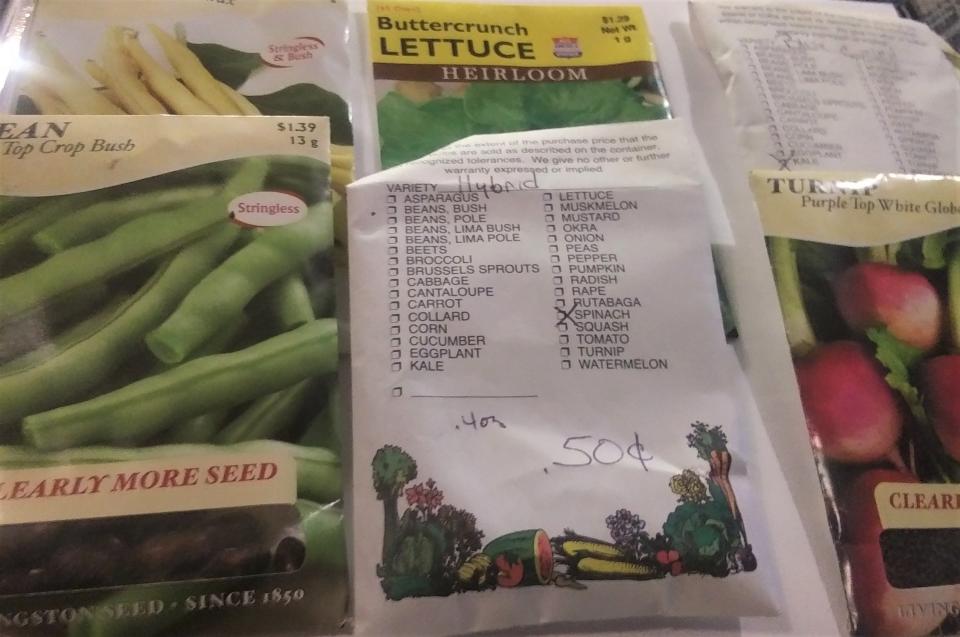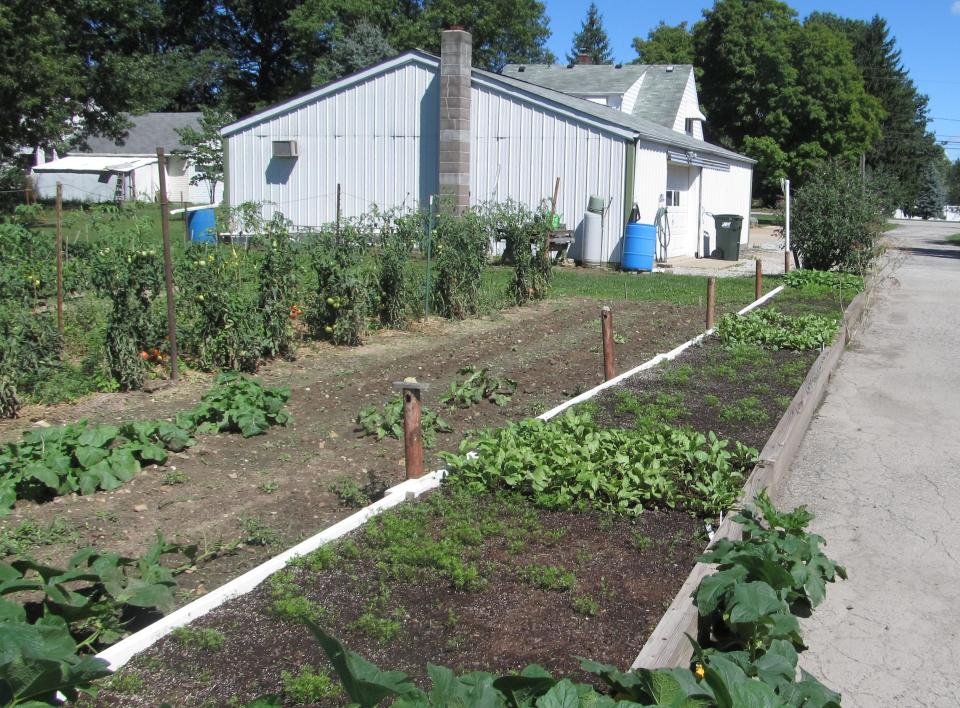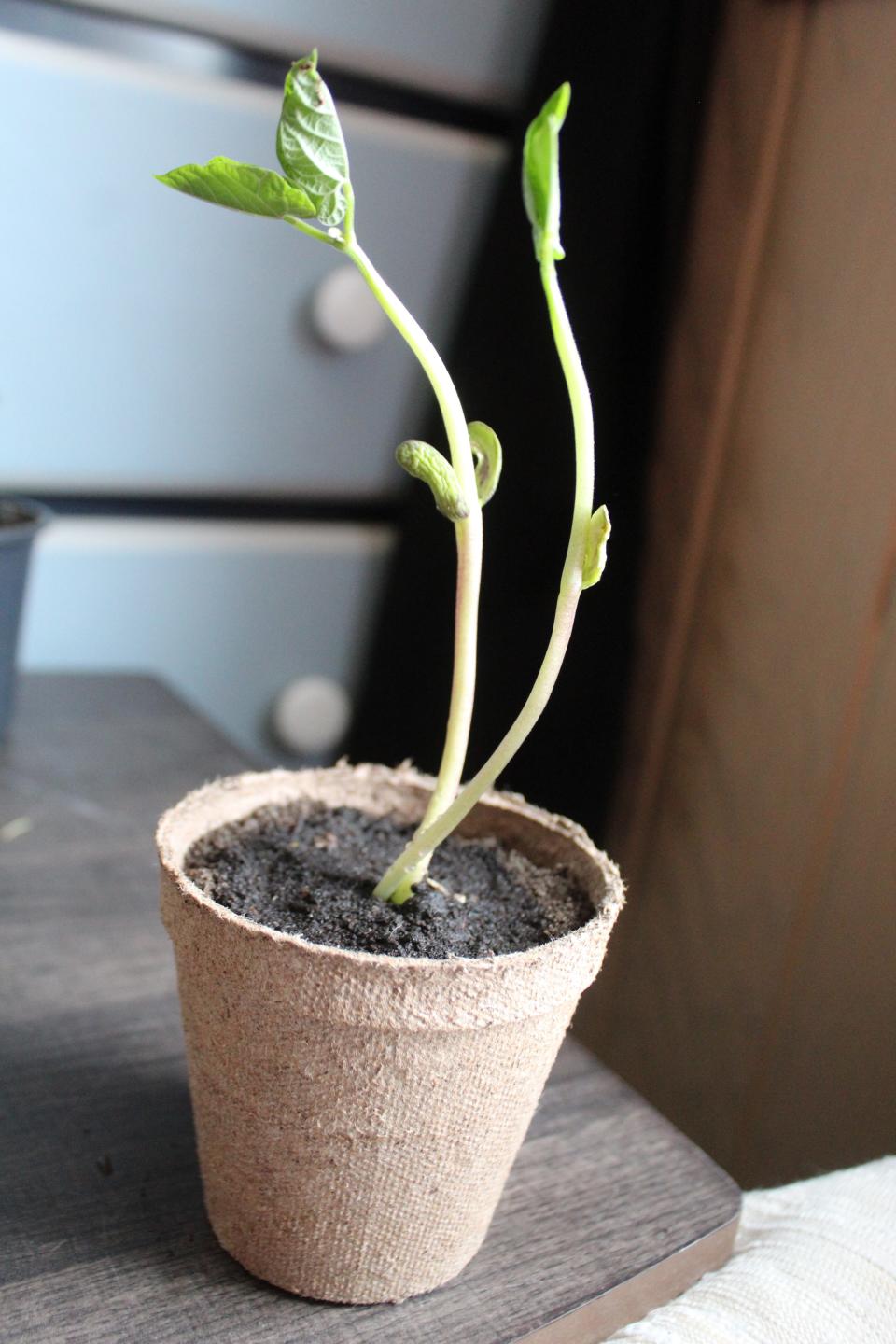A Stroll through the Garden: Spring fever and seeds for the garden
Frankly, I feel like a young man lately because I could get a smile from a flirty young lady, and the smile was enough to make me feel good — and the next time she would walk by without any expression on her face at all, and I felt like I got a serious cold shoulder (not really). The warm and cold snaps can have a similar effect on me as the flirty and non-flirty girl that would leave me cold. A substantial part of this past week was wonderfully warm and in the 60s; last weekend we had snow.
One of my friends at the pool recently asked if I had any guidance for planting in the garden. I’ve also been talking to folks who are going to greenhouses. Not sure why. My problem is I’m a recovering "plantaholic" and, if I get started buying plants again, I should not be held responsible. That is why I stay away from greenhouses for the time being. Maybe I should address my affliction better.

One of the reasons to start a garden is to teach our kids about raising their own food. When a little kid, like my grandkids, get a chance to plant seeds or seedlings, I enjoy the wonder and anticipation in their eyes as they see how far along the seeds have come at home or at school the next day or following weeks. In a way you are looking at a miracle — placing something that can be as tiny as dust in the ground, burying as if dead, and then seeing it come back to life and feed so many people.
First decide what to plant, and avoid what you won't eat
When I start a garden, I first ask myself and my family the kind of vegetables to grow so we are growing things we want to eat. If we are not going to eat what's produced, then why grow that plant? When I was a kid, my mother planted a flat of 48 Brussels sprout plants. Even today it is hard for me to look at a Brussels sprout in the face.
When I’m planting seeds, I don’t like replanting them because the plants freeze and do not make it. Some seeds like peas can take the cold better than other plants and actually do better planted. Other plants like tomatoes are very temperamental when it comes to the cold and, at temperatures around 32 degrees, will not make it. Peas are normally planted many weeks earlier than tomatoes in the garden. You are going to need to know the characteristics of the seed and whether it can take the cold or not.

In one of my 2022 blog posts, I have a list of seeds and the best times to get them in the soil and other helpful information. This chart can help in your decision-making process. The guide includes tolerance as to the probability of a date having the last frost date for planting. Our last frost date varies from May 7-22 with a 10% chance of frost. By May 22 you should be fairly safe to get just about anything in the ground. The Farmer’s Almanac can help you figure out your own last frost-free date.
Make sure your soil choice is right
I have a number of different supplies that are necessary for starting seeds consistently. Soil will always be a part of the equation. Due to the nature of the seeds, the soil will be lighter and designed to retain the moisture and help the seed get started. Not all soils will optimize the seeds performance. Seed containers are important in that, if the seed you plant is very sensitive to being transplanted, then there is a challenge and you may lose the plant. Some seeds need to be planted in peat pots to eliminate transplant stress.
If you over-plant the peat pots, you may need to thin out some of the extra seedlings. One of the traditional seed starters is the long row trays where you plant most of a seed tray in a row and, as the seeds come up and are ready to transplant, you need to tease the roots apart from one another as you transplant them into larger containers. You also can broadcast certain seeds in a variety of flats, especially if you can tease the roots apart. For the past few years, I have planted my final containers lightly with seed.

Three other items I use are domes to help retain the moisture, grow lights to artificially provide enough light waves that bring along the plants, and seed starter mats.
I hope you have a good stroll through your indoor and outdoor gardens and take time to enjoy the beauty around you even if it’s a simple Boston fern. This Boston fern is producing oxygen for you.
If you have any gardening questions for me, you can email me at ericlarson546@yahoo.com. A link to the columns made into blogs can be found at ohiohealthyfoodcooperative.org soon. I shall do the best I can to answer your question. Thank you for your participation in our column.
Eric Larson of Jeromesville is a veteran landscaper and gardening enthusiast and a founding board member of the Ohio Chapter of Association of Professional Landscape Designers.
This article originally appeared on Mansfield News Journal: Tips to prepare for the spring planting season

